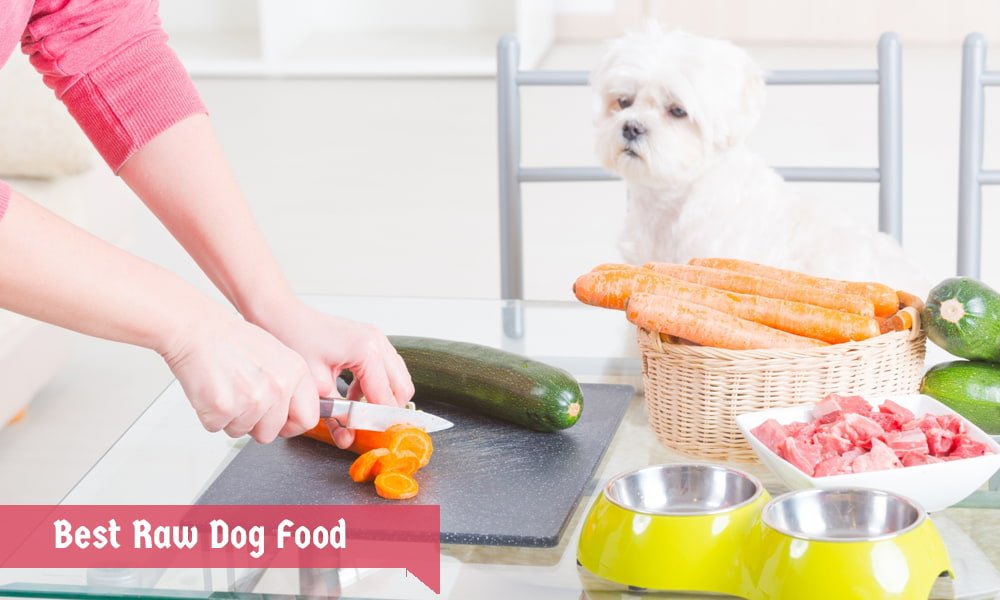
There are a lot of dog food diet trends out there, and raw dog food diets are one that a lot of people are buzzing about. But what is a raw food diet for dogs? Is it dry food And how do you know if it’s right for your dogs?
Here’s everything you need to know about this way of feeding dogs and some of the benefits of raw food to help you decide if it’s right for your dog, along with some of the best raw dog food options out there.
Contents
- What Is Raw Dog Food?
- Types of Raw Dog Food Diets
- Benefits of Raw Dog Food
- Concerns about Raw Dog Food
- Raw Dog Food Myths
- How to Buy and Store Raw Food for Dogs
- How to Choose the Best Raw Dog Food
- The Best Raw Dog Food
- 1. Merrick Lil Plates Grain Free Small Dog Raw Bites with Real Meat + Sweet Potato Dry Dog Food
- 2. Stella & Chewy’s Freeze-Dried Raw Bites Itty Bitty Beef Recipe Small Breed Dog Food
- 3. Instinct Raw Boost Senior Grain-Free Recipe Natural Dry Dog Food
- 4. Open Farm Freeze-Dried Raw Dog Food
- 5. Nulo Freeze-Dried Raw Dog Food for All Ages & Breeds
- 6. Sojos Complete Raw Made Easy Freeze-Dried
- Changing to a Raw Food Diet
- Transitioning from the Old Food to the Raw Food
- FAQs
- The Best Raw Dog Food for Your Dog
What Is Raw Dog Food?
Raw dog food mostly consists of uncooked meat (including both muscle and organ meat), fruits, vegetables, bones (whole, ground, or crushed), and eggs. Raw food diets have been around for a long time. The first raw dog food was introduced in 1993 by Ian Billinghurst, a vet in Australia. It was called the BARF diet, which stands for Bones and Raw Food or Biologically Appropriate Raw Food. The idea was that the dogs would thrive if they were fed a diet that was more biologically appropriate.
Types of Raw Dog Food Diets
Not all raw dog food is created equal. There are three distinct approaches.
1. The Prey Model
This diet centers on offering foods that dogs would eat in nature if they ate primarily prey. It’s not as popular as the other models as it doesn’t include as many vegetables and fruits and can lack antioxidants, vitamins, minerals, and the right balance of fat.
2. The Ancestral Diet
The Ancestral Diet was developed by an expert in pet nutrition named Steve Brown. It’s similar to the paleo diet for humans and is built on the idea that a dog’s diet should be based on the animal and plant materials that its ancient ancestors hunted and scavenged. This approach uses high levels of protein, small amounts of eggs and fish, fresh fruits and vegetables, and balanced healthy fats.
3. The BARF Diet
We already touched on the BARF diet. It focuses on meat, bones, and organs with some dairy, fruits and vegetables, and supplements. The BARF diet also allows some ground and chopped meats.
Benefits of Raw Dog Food
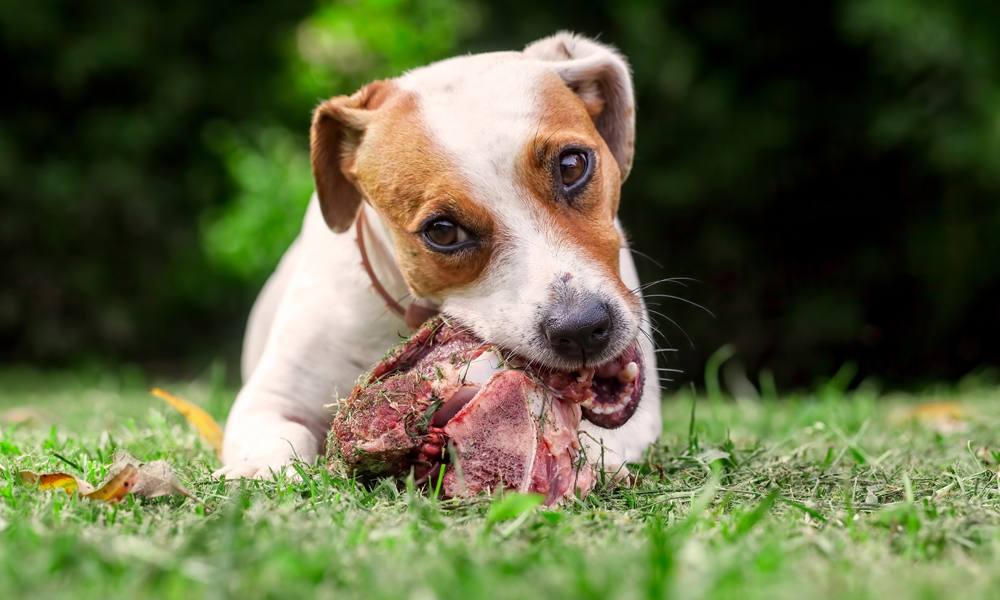
What are the benefits of raw foods for dogs? Many people believe that there are, and some insist it’s the best diet for dogs and the most biologically appropriate. Here are some of the pros of choosing a raw diet for your dogs.
- The ingredients in these raw dog foods are not only closer to what your dog’s ancestors ate, but they’re also unprocessed which makes them easier to digest.
- There are a lot of options. Feeding your dog raw meat comes with some risks for you, but proper storage and hygiene easily combat these issues. There are many options to choose from so you can find an approach that works for you.
- It’s not as expensive as you might think. We’re not going to say that raw food is cheap, but there are affordable options out there.
- They’re grain-free. If your dog has GI or skin sensitivities, a grain-free diet might help. Make sure you talk to your vet to eliminate any other problems.
- Your dog will love it. Ask other dog owners and read raw dog food reviews carefully to see what other people are saying. A lot of very picky eaters love frozen raw food or dry food with raw bites.
- It may improve the health of your dog. Though more research is needed, a lot of people who feed their dog raw food see benefits like better skin and coat condition, firmer stools, higher energy, stronger immune system, lower allergy risks.
Concerns about Raw Dog Food
To make an informed decision, you have to understand the risks of a raw dog food diet, too. Here are some things to consider:
- Raw food is more expensive than wet dog food or kibble.
- Storage is difficult because raw dog food has to be kept refrigerated or frozen.
- As with all raw protein, there is a risk of food-borne pathogens and bacteria being transferred and causing illness.
- Some raw foods do not include grains, fruits, or vegetables which puts your dog at risk of deficiencies.
- Foods that include whole bones are a choking hazard and may cause intestinal obstruction. They may also cause dental problems.
Raw Dog Food Myths
There are a lot of myths about raw food diets that people use to try to prove that they’re not healthy or should be avoided. Everyone has to make their own decision about what the best type of food for their dogs, and it’s important to know the facts. Here are some of the biggest myths about raw food diets.
Raw food diets are too dangerous for dogs because of the bacteria risk.
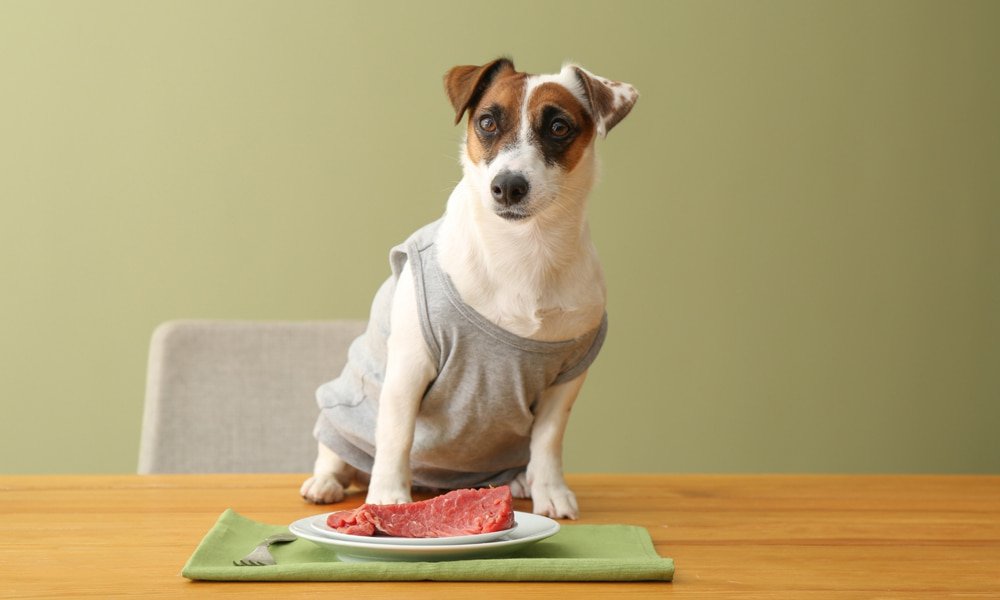
This is a valid concern because it is entirely possible that you can get sick by touching raw meat. But you can also get sick from touching raw chicken breast or other raw meat that you’re preparing for yourself. Treat raw dog food the same way you would touching raw meat for your own dinner. Clean all surfaces appropriately, keep the raw meat separate in the fridge, and always wash your hands after handling.
Raw dog foods don’t provide a balanced diet.
A balanced diet is very important, and you should make sure your dog is getting everything it needs from what you feed it. This is true whether you choose a raw food diet or a grain-free kibble. Are there some raw foods that are unbalanced? Sure. Are there raw foods out there that meet all of your dog’s nutritional needs? Absolutely. That’s why the key is to pay close attention to the ingredients to make sure you’re feeding your dog a recipe that contains all the necessary micronutrients. More on this later.
Raw diets are too complicated and I don’t have time.
A lot of people think that a raw diet is too much work. While it may take a little more time than opening a can or scooping food out of a bag, it’s not as if you’re preparing all the food from scratch in your kitchen. To serve a raw diet, all you have to do is open the container and pour it into the bowl. There are also very simple options, like dried raw food that can be used as regular dry food or frozen raw food that’s a little easier to store.
How to Buy and Store Raw Food for Dogs
There are multiple types of raw dog food. You can get it in patties, tubs, and rolls, and there are freeze-dried options, too. Freeze-drying is a popular option that involves removing the moisture from the food. It leaves behind most of the nutritional elements and makes the raw food shelf-stable, more affordable, and easier to handle.
Freeze-dried and dehydrated formulas are similar to regular dog food and can be stored in the same way. If you’re hesitant to try a raw dog food diet because you’re worried about safety and handling, freeze-dried food is the way to go.
Frozen and refrigerated food take a little more time and care. The ingredients in these foods are not sterile and you have to be careful to practice good hand hygiene and carefully clean the areas where this food was served. This includes scoops, knives, bowls, and cutting boards.
How to Choose the Best Raw Dog Food
We mentioned that not all raw dog foods are created the same and that it is true that some are not nutritionally balanced. The key to choosing a healthy diet for dogs is knowing what to look for. These are the main things to keep in mind.
High-Quality Animal Protein
Protein is the basis for any dog’s nutrition and is the first ingredient in most dog foods, including raw diets. Look for cage free meat if possible. Your dog needs a diet that is made up of at least 18 percent protein, but that is the absolute minimum. More is generally better. Look at the label. The first ingredient for any raw dog food should be real meat from a source that your dog can tolerate. For example, if you know your dog has chicken sensitivity, choose a raw dog food with a different protein.
Raw Bones
Dried raw bones are the second most important ingredient in raw dog food. Note that they do not always include whole bones. Instead, these bones are powdered or ground up to avoid issues with choking or bowel obstruction. Raw bones provide a lot of important nutrients to raw dog food, including phosphorus and calcium for strong teeth and bones.
Fatty acids
Omega 3 and 6 fatty acids are essential for skin and coat health. Make sure the food you choose has an adequate amount.
AAFCO Compliant
The Association of American Feed Control Officials or AAFCO regulates the sale and distribution of animal food and sets the nutritional standards. Making sure the food is AAFCO approved is the only way to know for sure that it meets your dog’s minimal nutritional requirements. Note that to do so, the raw food may have had to add vitamins and other supplements.
The Best Raw Dog Food
Here are some of the best raw dog foods on the market. Note that part of what we consider when choosing these foods is safety and ease of use. The foods we chose are all easy to use and store and your dogs will love them.
1. Merrick Lil Plates Grain Free Small Dog Raw Bites with Real Meat + Sweet Potato Dry Dog Food
This recipe from Merrick is a great way to take advantage of the raw food trend without worrying about handling meat and giving up the comfort of kibble. On the surface, it looks like a regular kibble. Real deboned beef is the first ingredient, but this recipe has freeze-dried bits of raw beef mixed in, too.
The combination of traditional kibble and raw bits provides many benefits for your dog. This recipe has healthy levels of omega 3 fatty acids to maintain a healthy coat and skin as well as glucosamine and chondroitin to support healthy joints. Note that this recipe is specially formulated for small breeds. It’s grain-free, gluten-free, and has pro- and prebiotics to encourage healthy digestion. If you’re interested in raw food but aren’t ready to make the jump from traditional dog food, this is a great choice.
2. Stella & Chewy’s Freeze-Dried Raw Bites Itty Bitty Beef Recipe Small Breed Dog Food
This is another great option for small dogs. These Lil’ Bites are tasty, high protein, and the raw bites are perfect for little mouths. Each small batch contains 95 percent grass-fed beef, organ meat, bones, and organic fruits and vegetables for a well-balanced diet. There are also added probiotics to support GI health and digestion and taurine for heart health.
The grain-free all-natural ingredients are minimally processed, and there are no added hormones, fillers, or antibiotics. It’s also chicken, pea, lentil, and potato-free and uses limited ingredients, so it’s good for dogs with allergies. This is well-balanced raw nutrition that’s convenient and perfectly safe.
3. Instinct Raw Boost Senior Grain-Free Recipe Natural Dry Dog Food
If you have a senior dog and you want to give them the benefits of raw dry food without making too drastic a change, this raw boost senior food from Instinct is an ideal choice. This grain-free dry dog food combines high-protein kibble with natural free-dried raw bites of cage free chicken. It has natural DHA for brain and eye health and glucosamine and chondroitin for joint support.
This is the first grain-free dog food for seniors to add freeze-dried raw pieces and provides well-rounded nutrition that also includes probiotics for GI health, omega fatty acids for skin and coat, and calcium and phosphorus for strong bones and teeth.
4. Open Farm Freeze-Dried Raw Dog Food
Open Farm uses humanely raised beef in this freeze-dried raw food and uses muscle, organ meats, and bone. It also includes organic vegetables, like blueberries, squash, spinach, and cranberries to provide well-rounded nutrition.
This freeze-dried raw food is best used as a topper for dry kibble to supplement your dog’s diet. You can use it right out of the package or add a little water to get soft, moist bites that dogs love.
5. Nulo Freeze-Dried Raw Dog Food for All Ages & Breeds
There are a lot of things to love about this freeze-dried raw dog food from Nulo. It’s available in multiple recipes using a variety of raw proteins, like duck, lamb, salmon, beef, and turkey. Each formula contains at least 80 percent meat along with bones, organs, and 20 percent fruits and veggies. The flavors are paired well, too. For example, the beef recipe includes apples, broccoli, and parsley and the salmon and turkey are paired with strawberries, blueberries, pumpkin, kale, and spinach.
These recipes also include probiotics to encourage proper digestion and are grain-free. Choose from a five or 13-ounce bag so you get as much or as little as you need depending on the size of your dog. This food can be used as a meal, topper, or side dish.
6. Sojos Complete Raw Made Easy Freeze-Dried
This product from Sojos is indeed raw made easy. All you have to do is add water and allow the freeze-dried morsels to soften. It’s made with real freeze-dried lamb and other natural ingredients, like air-dried broccoli, banana, kelp, and peppermint. This food is made in small batches for the strictest quality control, and they use only natural ingredients with no artificial preservatives.
This is a good choice if you’re looking for a little more volume, as it’s a one-pound bag that, when rehydrated, equals four pounds of raw food.
Changing to a Raw Food Diet
Some dogs are resistant to change, and making the switch to a raw food diet might be tricky. Here are some of the most common problems people have with their dogs when trying to make the switch.
They’re picky.
Some dogs are just very picky. Even if the raw food looks and smells delicious, they might be hesitant to try it. Sometimes, it can help to make the new food look like the old food as much as possible. For example, instead of just adding some raw food to the top of the kibble, try mixing it in thoroughly.
They don’t like the texture.
If your dog is used to crunchy kibble, softer raw food might take some getting used to. There are some things you can try to get your dog through this initial transition. Again, mixing dry kibble into the raw food is a start. It gives your dog the crunch it’s used to while introducing the new flavor and texture. You can also try soaking the kibble in some water, then mixing it with the raw food to form a kind of pate.
Transitioning from the Old Food to the Raw Food
You should never just stop feeding your dog the food it’s used to and give them a new recipe. This is true whether you’re transitioning from one kibble to another and it’s certainly true when going from traditional kibble to raw food.
You have to make the change slowly. Start with 75 percent of the old food and 25 percent raw food. Keep this ratio for a few days, especially if your dog isn’t reacting to it well.
Wait until your dog has normal stools and is happy to eat at mealtime, then change to half old food and half raw food. Again, don’t rush it. Give your dog a few days, wait until they happily clean their plate and you are sure they aren’t going to have stomach issues. Then, switch to increase the ratio of raw food, using 25 percent old food and 75 percent raw.
Wait a few days, make sure your dog is tolerating the change, then start using only the raw food. Note that switching from kibble to raw food is a more difficult transition than going from one kibble to another. The quality and texture of raw food are very different, and it may take your dog awhile to adjust.
Remember, there’s no rush. The important things are that your dog’s stomach tolerates the change and that they like the new food. Go slower if you need to, implementing only 10 percent changes if needed. Taking as long as your dog needs delivers the best results.
FAQs
Still not sure about whether raw dog foods are best for your pet? Here are some of the things that most people have questions about.
Is it safe?
There is a risk of bacteria and other food-borne pathogens in this food since it contains raw meat, but it’s important to remember that this is the same risk that comes with any raw meat, including the chicken breast you have in the freezer. Keep the food refrigerated, clean all surfaces and tools that come in contact with it thoroughly, and wash your hands. If you practice safe food handling practices, raw food is just as safe as canned or kibble. Remember, there are other options, too, like frozen raw food or dry kibble with raw bites mixed in. All share a lot of the same benefits, like high-quality cage free meta and grain free recipes.
Isn’t it really expensive?
Raw food is the most expensive kind of dog food out there, but some people argue that the quality of the diet is worth the increased price. One of the reasons why it’s so important to know what to look for in raw dog food is so you can look for something affordable, without worrying about whether or not it’s nutritionally sound.
What meat is best?
What is the best meat is different for every dog? Some dogs do just fine with common proteins like chicken and beef, but dogs with sensitive stomachs or allergies might need a different type of protein. Most vets recommend novel proteins for dogs with true food allergies, meaning a protein they haven’t eaten before, like turkey, pork, salmon, kangaroo, or buffalo. All of these meats are complete sources of protein that provide your dog with the amino acids needed for muscle growth. Cage free meat is a good option, too, because it’s more humane.
Do raw dog foods have carbs?
Raw dog foods generally do not include grains, but that doesn’t mean your dog’s diet won’t include carbohydrates. A portion of well-balanced raw dog food contains fruits and vegetables that add fiber, nutrients, and in some cases, carbohydrates. That said, they often have fewer carbs than dry dog foods that contain grains.
Do I have to use an exclusively raw diet?
No, a lot of people supplement their dog’s diet by using this food as a treat or use them as a topper with regular kibble. There’s no rule for how much raw dog food you should feed your dog, but you have to make sure they’re getting all the nutrients they need to stay healthy regardless of where they’re coming from. The best diet is one that gives you dog what it needs and that your dog likes to eat.
How much raw food should I feed my dog?
Most people suggest feeding your dog between two and three percent of their body weight every day. So, if your dog weighs 25 pounds, you should feed them between 0.5 and 0.75 pounds of raw food every day. If your dog is active, aim for the higher end of that range. If they’re not so active, stick with the lower end. Most raw foods have a feeding chart on the packaging, and you can always check with your vet if you’re not sure.
The Best Raw Dog Food for Your Dog
There are a lot of options to choose from when you want to feed your dog a raw diet. Some of the myths about raw food diets aren’t exactly fair, but you do have to be careful when choosing what’s best for your dog.
I grew up in a household that was filled with animals. I believe that my fate as a dog-loving person was sealed in early childhood since my parents owned several dogs of varying sizes and breeds. There was no choice but to take care of and learn about dog habits and the best animal care practices — otherwise, I’d be clueless about how to go about the creatures I was surrounded by day and night.
As a life-long puppy lover, I know a thing or two about dogs and how to go about caring for them in the best way possible. Although I’m not a professionally trained dog behaviorist, trainer, or veterinarian, all of my knowledge and experience with canines comes from a place of love and a deep-rooted passion for dogs and animals in general.
Seeing as dogs kept me company throughout every stage of my life, I decided to follow a different path in my academic life and obtained a Bachelor’s and Master’s degrees in Marketing Management and Digital Advertising, which ultimately allowed me to combine my professional training and personal experience by creating the ultimate dog lover’s resource website! Along with my husband, Dave, I run MySweetPuppy for like-minded dog lovers who want to have a single, clear, and reliable information source about anything and everything related to dogs and their well-being.

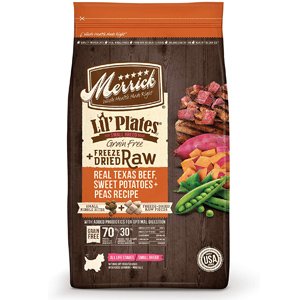
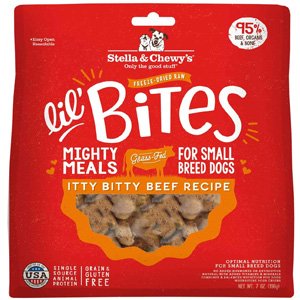
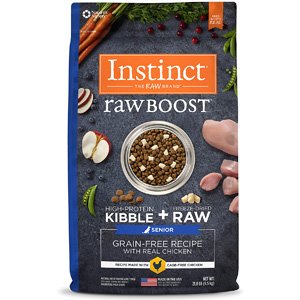
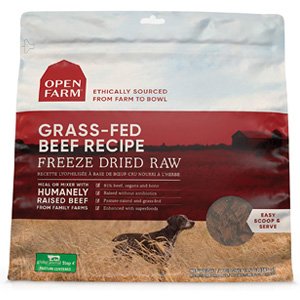
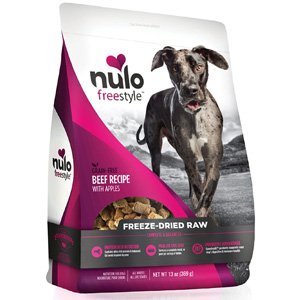
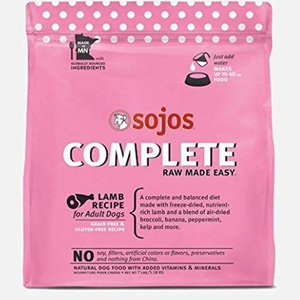
![The Best 4 Low Sodium Dog Foods [2021 Buyer’s Guide]](https://mysweetpuppy.net/wp-content/uploads/2015/12/low-sodium-dog-food1.jpg)
